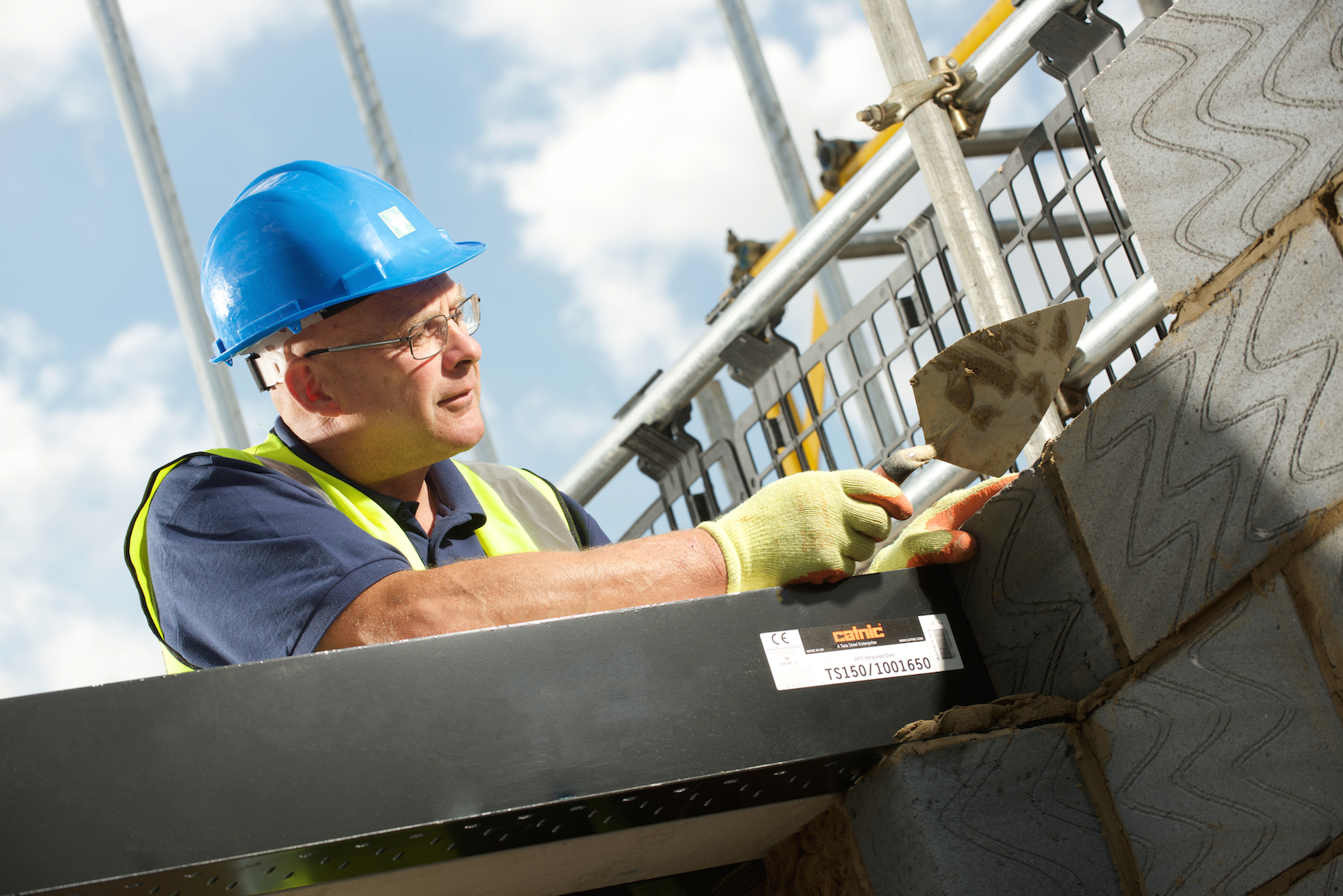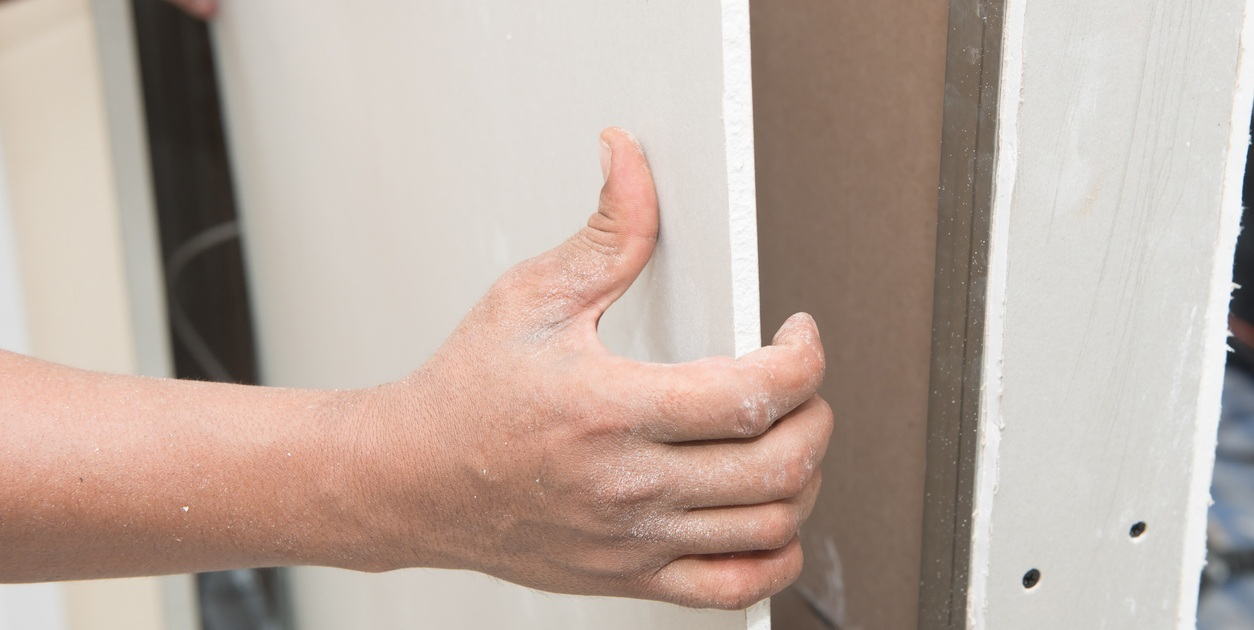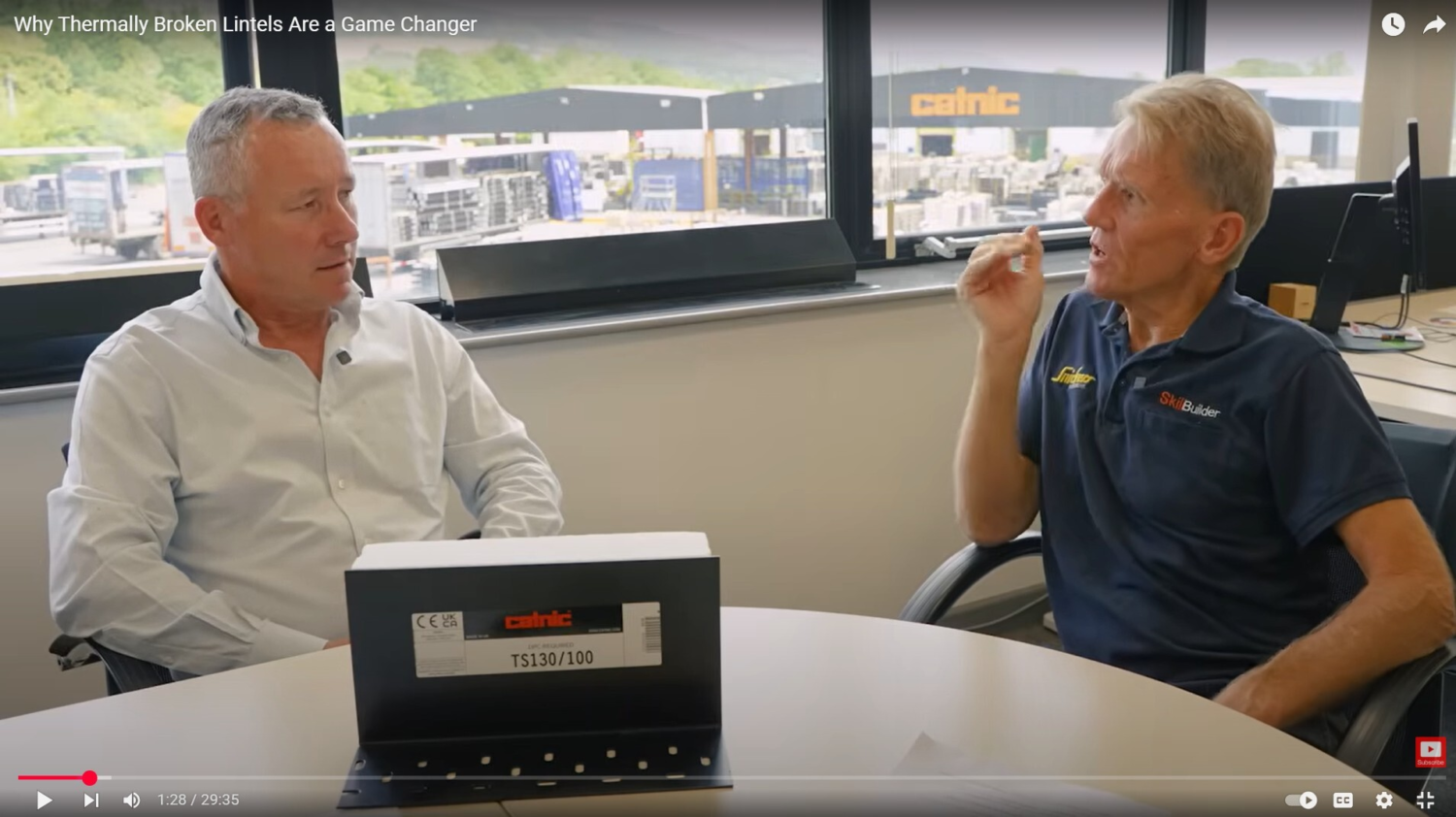Specifying thermally broken lintels to reduce thermal bridging and achieve carbon gains
Lintels, and specifically thermally broken lintels, have a significant role to play in reducing thermal bridging. They represent one of the simplest and most economical ways for building fabric to be designed and constructed to help achieve the carbon gains necessary to meet current and future building regulations.
‘Carbon gains’ is simply an alternative description for carbon emission reductions. Successive versions of energy efficiency regulations have sought to achieve carbon gains, and they’re now even higher on the agenda. For example, it is intended that, in 2025, the Future Homes Standard in England will deliver dwellings that emit some 75% less carbon than those complying with Part L 2013.
Rising to the challenge of reducing carbon emissions
Consultations and proposals outlining future energy efficiency regulations in England, Wales and Scotland are setting out how the construction industry will contribute to the target of net zero carbon emissions by 2050.
A multitude of factors will determine whether that overarching 2050 target (and any intermediate ones) are ultimately achieved. Significant infrastructure challenges, such as decarbonising the national grid and making a wholesale switch to low carbon heating, need to be met to reach net zero.
In that context, changing the specification of lintels in buildings might sound like a small measure. However, while it might be small, it is far from insignificant.
It’s all a question of reducing energy demand and using resources more efficiently at the level of individual buildings. The cumulative impact of doing so will then reduce the scale of those larger challenges, making them more achievable.
A commonly cited barrier to ‘sustainability’ generally, and low energy construction more specifically, is that it costs more. In the past, volume housebuilders have lobbied against zero carbon standards because the new standards would cost more and slow the delivery of new homes[1] - even though the cost to retrofit those same homes at a later date will be significantly higher than the initial outlay would have been[2
[1] https://www.businessgreen.com/news/3072448/persimmon-admits-lobbying-government-to-axe-zero-carbon-homes-goal
[2] https://www.theguardian.com/en...
The answer, then, is twofold: ensure that efficiency is ‘locked in’ to the building fabric at the construction stage, to save expensive retrofit later, while reducing the perceived financial ‘burden’ of delivering energy efficiency measures from the outset.
Using thermally broken lintels to achieve carbon gains
We have written extensively about the proposed changes to the Building Regulations in England and the introduction of Part L 2021. The linked blog post summarises how lintels contribute to ‘locking in’ building fabric performance, and how thermally broken lintels can make significant carbon savings in buildings today, as well as under the regulations we know are coming over the next few years.
The purpose of this post is to demonstrate how effective lintels are at delivering those carbon emission reductions economically, putting paid to the idea that low energy construction has to be expensive. For only a modest additional outlay, thermally broken lintels can deliver beneficial performance improvements - all without changing the way in which masonry cavity walls are constructed.
To show this, Catnic undertook a modelling exercise comparing the impact of different energy saving/carbon reduction measures on the Part L 2013 compliance of a typical house type. The exercise took a 94m2 semi-detached house that met the Part L 2013 notional specification, and then looked at the cost of implementing different measures and the carbon emissions they saved.
Four different types of measure were modelled:
Change from double glazing to triple glazing.
The window U-values were improved from 1.2 W/m2K to 0.9 W/m2K.
Increase in cavity wall insulation by 25mm.
Two scenarios were looked at here: a partial fill arrangement where 50mm of PIR insulation was increased to 75mm, both with a 50mm clear cavity; and a full fill mineral wool arrangement going from 100mm of insulation to 125mm. The increases improved the U-values from 0.24 W/m2K for both original scenarios, to 0.19 and 0.20 W/m2K for the two insulation types respectively.
Addition of photovoltaic (PV) panels.
0.50 kWp added, assumed installed on a southwest orientation at an angle of 45 degrees.
Change of lintel type.
Again, two scenarios were modelled here: an upgrade from the ‘standard’ Catnic CG lintel to Catnic’s Thermally Broken Lintel (TBL), giving an improvement in junction psi value from 0.25 W/mK to 0.05 W/mK; and an upgrade from the accredited construction detail with a psi value of 0.30 W/mK to the Catnic TBL of 0.05 W/mK.
What carbon reductions do different low energy measures achieve?
First, the carbon emission reductions, in kilograms of CO2 per square metre of floor area per year, were calculated for each scenario.
Scenario |
Carbon gains (kg CO2/m2/yr) |
Double to triple glazing |
0.38 |
Increase in PIR cavity wall insulation |
0.53 |
Increase in mineral wool cavity wall insulation |
0.32 |
PV panels |
2.21 |
Catnic CG lintel to Catnic TBL |
0.26 |
ACD to Catnic TBL |
0.33 |
All of the measures offer near comparable carbon gains, with the exception of the PV panels. The addition of this renewable technology offers a substantial reduction in carbon emissions. However, this does not tell the whole story.
At a total cost of £1120, the addition of PV panels represented a significant capital outlay. To help put that in context and make the comparison fair, the cost of each measure per kilogram of carbon dioxide saved was calculated.
Scenario |
Carbon gains (kg CO2/m2/yr) |
Cost per 1kg CO2 |
Double to triple glazing |
0.38 |
£574.58 |
Increase in PIR cavity wall insulation |
0.53 |
£551.40 |
Increase in mineral wool cavity wall insulation |
0.32 |
£447.03 |
PV panels |
2.21 |
£506.79 |
Catnic CG lintel to Catnic TBL |
0.26 |
£311.12 |
ACD to Catnic TBL |
0.33 |
£245.13 |
Here it’s possible to see the economic impact of changing lintel specification.
The ACD with a psi value of 0.30 W/mK is commonly used in SAP calculations for dwellings, but by making the switch to the Catnic TBL it’s possible to reduce carbon emissions for around half the cost per kilogram saved compared to the other measures. (Demonstrated in our latest video)
On top of that, the use of the Catnic TBL is a building fabric measure. The Building Regulations in England are unique in the UK for using the fabric energy efficiency standard (FEES) as a metric for compliance. The changes to the regulations in Part L 2021 and the Future Homes Standard will only increase the importance of FEES as part of compliance.
Scenario |
Carbon gains (kg CO2/m2/yr) |
Cost per 1kg CO2 |
Cost per 1% FEES gain |
Double to triple glazing |
0.38 |
£574.58 |
£67.60 |
Increase in PIR cavity wall insulation |
0.53 |
£551.40 |
£65.82 |
Increase in mineral wool cavity wall insulation |
0.32 |
£447.03 |
£53.78 |
PV panels |
2.21 |
£506.79 |
n/a |
Catnic CG lintel to Catnic TBL |
0.26 |
£311.12 |
£37.11 |
ACD to Catnic TBL |
0.33 |
£245.13 |
£29.74 |
As renewable technology, PV panels do not contribute to any improvement in FEES. Also consider that the costs shown in this blog post do not take into account maintenance and replacement. PV panels could be expected to need replacement at least once, and probably twice, during the typical lifetime of the dwelling in order to keep delivering their performance.
Similarly, the glazing could need to be replaced once during the dwelling’s lifetime. If replacement is not required, maintenance will be necessary and, of course, it is possible for panes to fail.
Only the thermal insulation and lintels could be expected to maintain their performance for the life of the building without requiring replacement or maintenance.
On this point it is worth considering that the thermal conductivity of insulation materials is declared based on 25-year ageing. As such, there could be questions to consider over their performance beyond that timeframe.
About the Catnic Thermally Broken Lintel
One final point to discuss about the conclusions above is that the psi value of the Catnic TBL was assumed to be 0.05 W/mK. This is the worst-case performance for the TBL range, with psi values as low as 0.02 W/mK possible when used over structural openings.
The potential carbon gains to be made when using the TBL therefore stand to be even greater, which in turn will further reduce the cost per kilogram of CO2 and the cost per 1% FEES reduction.
By starting with the Catnic TBL to make cost effective carbon emission reductions, any further reductions that have to be achieved in other areas of the building fabric are not as onerous. That has the compound effect of reducing their cost and impact on the dwelling design.
For example, it might still be desirable to include some renewable technology, like PV panels, as part of the overall dwelling design. The emission reductions due to the Catnic TBL could reduce the size of the PV installation, saving money and allowing it to run more efficiently. That makes it more likely that the PV will achieve its stated life expectancy, reducing maintenance and meaning the cost of replacing a smaller system at a later date is also lower.
It is impossible to factor in those long-term benefits to an exercise like the one covered in this post, but it does not mean they shouldn’t be thought about when making specification decisions.
Overall, the Catnic TBL is an ideal place to start when considering how to achieve carbon emission reductions in residential dwellings. It provides the same load-bearing performance as Catnic’s standard cavity lintels, and therefore imposes no additional requirements on the external wall specification or structural design.
Learn more about the difference that the Catnic TBL can make by downloading our white paper. The Catnic product selector can help you to choose the most appropriate lintel solution for your project, whether for masonry cavity walls or other applications. Alternatively, contact us to discuss your project and to find out more about Catnic solutions.
More
-
![]()
- Plaster Bead & Mesh
- Guide
How to Fix an Angle Bead to Plasterboard
-
![]()
- Lintels
- Guide
Why thermally broken lintels are a game changer


